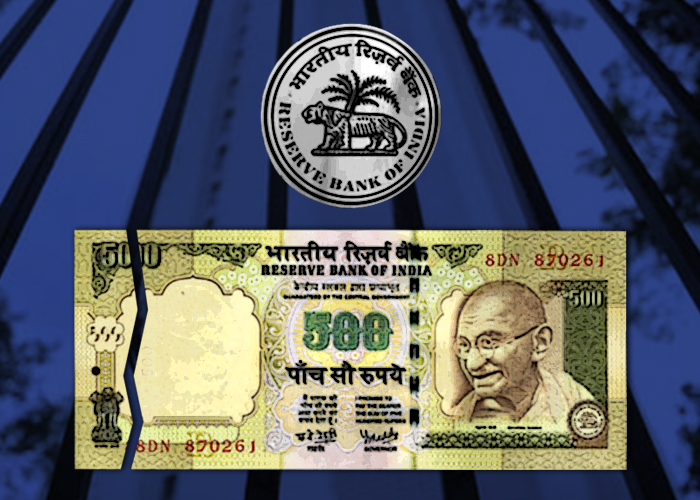RBI cuts interest rate to stimulate economy. Now pray for a good monsoon

To spur demand in the economy, the Reserve Bank of India has cut the repo rate by 25 basis points - a quarter of a percentage point - to 6.50%. Repo rate is the rate of interest at which commercial banks borrow from the central bank.
The RBI has also revised down the daily cash reserve ratio maintenance from 95% to 90% to improve liquidity in the banking sector, and announced a fund infusion of Rs 15,000 crore into the banking system through Open Market Operation.
The rate cut will help stimulate the economy, the finance ministry said in a statement Tuesday. "The RBI's actions today are very welcome. Obviously we believe that the rate cut which has been effective would be a very good stimulus for the economy," added the Minister of State for Finance Jayant Sinha.
Also read - Stop asking RBI to cut rates Mr Subramanian. Arrest food inflation first
But is the cut of 25 basis points really enough to stir demand in the Indian economy?
For one, the government recently reduced the interest rates on small savings schemes by up to 1.3%. Will the cut of just 0.25% be enough to compensate the people and encourage them to buy more?
Competing pressures: RBI can't go for sharp interest rate cuts as it would lead to high inflation
The demand in the economy is determined by a combination of two factors, prices of products and the money available to the people to purchase them. In the past two years or so, the people have not had enough money to buy stuff, for the following reasons.
-
Slow rise in incomes
-
High interest rates
-
Destruction of rural economy due to two consecutive droughts
-
Lack of new jobs
The RBI can try to address only the second of these factors - high interest rates.
Two years ago, the RBI had to raise interest rates to control rising inflation, which was averaging anywhere between 5.88% and 9.30% over the 2012-15 period. The RBI wants to stabilise inflation at 4% in the long-term.
But now when the consumer inflation is down to around 5.18% - thanks largely to lower food inflation - and the wholesale price inflation is in the negative for the 16 month in a row - touching -0.91% in February - it was expected that the RBI would make a significant cut in interest rates for the banks, so they could pass it on to consumers.
It hasn't.
Indeed, the BSE Sensex gave the thumbs down to the RBI's policy move, shedding 516 points Tuesday. Stocks across sectors took a hit.
-
NTPC -3.09%
-
Tata Motors -4.52%
-
Adani Ports -6.23%
-
HUL -0.43%
-
Tata Steel -2.53%
Clearly, the market was not cheered by the 25 basis point rate cut sensing it won't affect the demand side of the economy much.
"I don't think this kind of rate cut can give demand impetus to the economy," Abdul Majeed, Partner at PwC India told Catch. "The RBI wouldn't take any risk with the food inflation by reducing the interest rates sharply, which may backfire."
For example, the current base lending rate of the State Bank of India is 9.3%, and after the repo rate cut, it may reduce it by 10-15 basis points. This, many experts feel, isn't quite enough, particularly for retail consumers.
The market gives the thumbs down to RBI's latest rate cut: BSE Sensex sheds 516 points
"The RBI has kept in mind the issues of the banking sector in its monetary policy. It has reduced the liquidity crunch in the system which may help the corporates to an extent but is unlikely to be transferred to retail customers," said Madan Sabnavis, chief economist with Care Ratings.
So, if not this RBI rate cut, what can boost demand?
At the moment, the only thing that can boost demand in the Indian economy is a good monsoon. The country has suffered two consecutive droughts which have killed the people's capacity to take loans even at cheap interest rates.
According to Majeed, "when the economy is doing well and people have money in their hands, they do not mind taking loans even at higher interest rates. We need the same thing now. If the economic activity picks up through the government's infrastructure spending, we will see more demand in the economy."
In other words, the RBI doesn't have much scope to go for sharp rate cuts given the pressure to keep inflation in check; it has done what it could. Now, a lot depends on how much of the interest rate cut the banks pass on to their consumers to boost credit offtake. And, of course, a good monsoon would greatly help.
More in Catch - Interest rates and RBI: Your guide to understanding this complicated relationship
Deep surgery needed to clean up bank balance sheets, says RBI governor Raghuram Rajan







![BJP's Kapil Mishra recreates Shankar Mahadevan’s ‘Breathless’ song to highlight Delhi pollution [WATCH] BJP's Kapil Mishra recreates Shankar Mahadevan’s ‘Breathless’ song to highlight Delhi pollution [WATCH]](https://images.catchnews.com/upload/2022/11/03/kapil-mishra_240884_300x172.png)

![Anupam Kher shares pictures of his toned body on 67th birthday [MUST SEE] Anupam Kher shares pictures of his toned body on 67th birthday [MUST SEE]](https://images.catchnews.com/upload/2022/03/07/Anupam_kher_231145_300x172.jpg)






